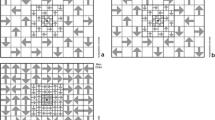Summary
Purpose: The first morphological changes in eyes with HIV infection are microvascular disease of the retina with cotton-wool spots and microaneurysms. The study was performed to find out if evidence of disturbances of ocular microcirculation can be established by non-invasive methods.
Patients and methods: Twenty-seven patients with HIV infection and without opportunistic infections underwent thorough ophthalmologic examination with threshold-oriented, suprathreshold perimetry (TAP 2000 ct, Oculus) and white-noise field campimetry (TEC, Oculus).
Results: Visual field examination was normal in 23 out of 27 patients (85 %), whereas 4 patients showed relative field defects in at least one eye. In white-noise field campimetry 13 out of 23 perimetrically unaffected patients (56 %) perceived scotomas in one or both eyes. These scotomas were not stable. Three of 4 patients with relative scotomas in the visual field had cotton-wool spots in the retina and showed a stable scotoma in campimetry. Visual acuity, IOP, and cup/disc ratio were within normal ranges.
Conclusion: White-noise field campimetry complements the standard examination of patients with HIV and might be capable of indicating disturbances of ocular microcirculation by a non-invasive method before morphological changes in the retina can be seen.
Zusammenfassung
Hintergrund: Die frühesten Netzhautveränderungen bei einer HIV-Infektion sind eine Mikroangiopathie mit Cotton-wool-Herden und Mikroaneurysmen. Mit der vorliegenden Studie soll geprüft werden, ob retinale Funktionsstörungen vor morphologischen Veränderungen mit nicht invasiven Mitteln nachweisbar und eventuell als prognostische Kriterien hilfreich sind.
Patienten und Methode: 27 Patienten mit bekannter HIV-Infektion und ohne opportunistische Infektion wurden einer ophthalmologischen Untersuchung mit schwellennah überschwelliger Rasterperimetrie am Tübinger Automatik-Perimeter (TAP) und Rauschfeldkampimetrie am Tübinger Elektronik-Kampimeter (TEC) unterzogen.
Ergebnisse: Im Gesichtsfeld hatten 23 von 27 Patienten (85 %) keine pathologischen Ausfälle, 4 Patienten wiesen kleine relative Ausfälle auf. Bei der Rauschfeld-Kampimetrie ließen sich bei 13 der 23 im Gesichtsfeld unauffälligen Patienten (56 %) ein flüchtiges Skotom nachweisen. Bei den 4 Patienten mit relativen Gesichtsfeldausfällen hatten 3 Patienten Cotton-wool-Herde in der Retina und feststehende, stabile Skotome. Die Sehschärfe, Augendruck und die Papillenexkavation waren im Normbereich.
Schlußfolgerung: Unsere Ergebnisse lassen eine verborgene Mikroangiopathie der Retina/Choroidea als Ursache der Skotome auch in frühen Stadien vermuten, die zum Teil auch reversibel erscheint. Die Rauschfeld-Kampimetrie scheint eine nicht invasive Methode zu sein, derartige Störungen aufzuspüren, bevor morphologische Veränderungen sichtbar werden.
Similar content being viewed by others
Author information
Authors and Affiliations
Rights and permissions
About this article
Cite this article
Hettesheimer, H., Erb, C., Schiefer, U. et al. White-noise field campimetry in patients with HIV infection. Ophthalmologe 96, 437–442 (1999). https://doi.org/10.1007/s003470050433
Published:
Issue Date:
DOI: https://doi.org/10.1007/s003470050433




